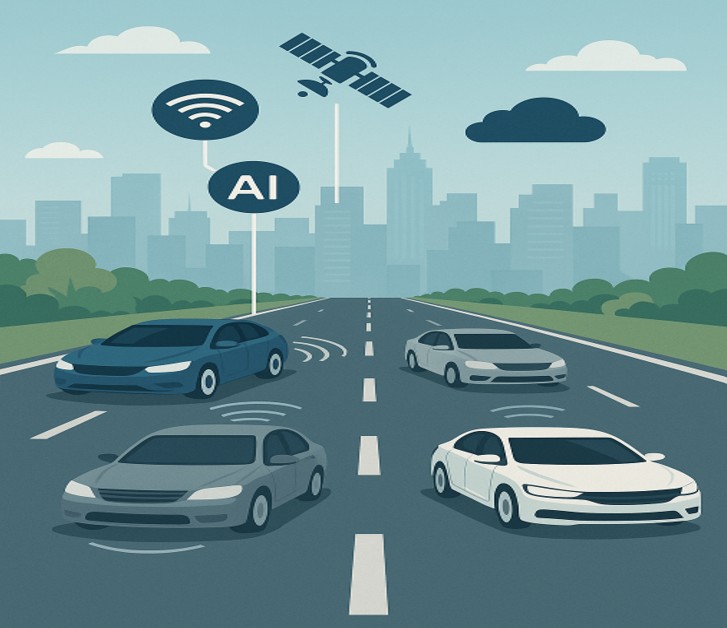
The objective of this thesis is to investigate the impact of autonomous vehicles (AV) and connected autonomous vehicles (CAV) on road safety, using microscopic traffic simulation. The analysis was based on simulation data derived from nine scenarios implemented in the city center of Athens. These scenarios varied in terms of the market penetration rate (MPR) of AVs and CAVs in the network, ranging from 0% to 100%, with an incremental step of 25%. For each scenario, vehicle conflicts were recorded where the time to collision (TTC) ranged between 0.2 and 1.5 seconds. Additionally, traffic and geometric characteristics of the locations where the conflicts occurred were documented. The statistical analysis was carried out through the development of three models: two multiple linear regression models (for the variables TTC – time to collision, and DeltaS – speed difference), and one multinomial logistic regression model to predict the type of conflict. The results indicated that the influencing factors for the above variables are related both to traffic composition (e.g., vehicle types) and infrastructure characteristics (e.g., speed limit, capacity). Ultimately, the increase in AV/CAV penetration in the network was found to have a positive impact on road safety, significantly reducing the number of vehicle conflicts.
| ID | ad173 |
| Presentation | |
| Full Text | |
| Tags |













